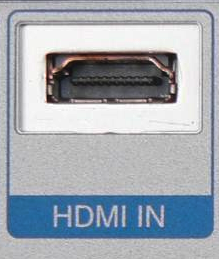The HDMI Forum has published a supplement to the HDMI standard. The new version has made HDMI 2.1a Amendment 1. This new release brings with it only one new feature: support for more powerful power feed to HDMI cable. The only new feature in the standard is known as HDMI Cable Power.
HDMI cable has supported some power feeding features for a long time. On an HDMI connector, Pin 18 is designed for +5V power. It was originally designed to feed the monitor with voltage even if it’s shut off, so its DDC (EDID) information can be obtained. Some devices (e.g. cheap HDMI splitters and HDMI to AV converters) might have had option to use this voltage instead of the supplied external voltage in some cases. The original +5V power feed is designed to support minimum 55 mA current, which is not much.
How much power can an HDMI Cable with Cable Power draw? Using HDMI Cable Power, the cable can draw up to 300 mA from the 5V supply of the source HDMI.
The more power feature allows implementing longer cables without the need for separate gimmicks. With UltraDH resolutions the standard thin passive HDMI cables can’t carry signal for many meters. To support longer distances, active HDMI cables is one solution. An active HDMI cable has active electronics inside cable connectors that allows longer distance data transfer (by amplifying the signal on copper cable and/or converting HDMI signal to fiber). The downsides of active cables have been that they are more expensive, typically need external power source for operation (like USB power) and are uni-directional (can carry video only to one marked direction).
HDMI Cable Power will be essential, at least with Ultra High Speed HDMI cables, which can be passive up to a few meters long. In the case of the Ultra High Speed HDMI® Cable, performance requirements are so high, it is likely that the only way to meet the Ultra High Speed HDMI requirements (48Gbps bandwidth is the new Ultra High Speed HDMI Cable) in cables longer than a few meters is through powered, active HDMI Cables.
When HDMI can feed in the future enough power needed for active cable electronics, the cable can grab power directly from an image source that supports the feature. At least at the beginning, however, the option included in the cables to turn on the power from the USB connector. While active HDMI Cables have previously been used extensively in professional markets, their use will now increase in the home whenever consumers need longer-length Ultra High Speed HDMI Cables. Active cables can only be attached in one direction: One end of the cable is specifically labeled for attachment to the HDMI Source (transmitting) device, and the other end of the cable must be attached to the HDMI Sink (receiving) device. If the cable is attached in reverse, no damage will occur, but the connection will not work.
HDMI 2.1a, Amendment 1 adds a new feature: HDMI Cable Power. With this feature, active HDMI® Cables can now be powered directly from the HDMI Connector, without attaching a separate power cable. This makes attaching and using active HDMI Cables as easy as using passive, wired HDMI Cables. To use the HDMI Cable Power feature, it is necessary to have an HDMI Cable which supports the HDMI Cable Power feature, and also an HDMI Source device which supports the HDMI Cable Power feature. This combination ensures that the active HDMI Cable can safely draw sufficient current from the HDMI Connector to power its internal circuitry. An HDMI Cable with Cable Power will work with any HDMI device, but if the HDMI Source Device does not support HDMI Cable Power, a separate power connection (usually microUSB or USB-C) must be attached to the cable.
Sources:
HDMI 2.1a, Amendment 1
https://www.hdmi.org/spec21sub/cablepower
Superkaapelin luvataan ratkaisevan tv-ongelmat – tällainen on uusi HDMI https://www.iltalehti.fi/digiuutiset/a/f1a01ebd-28eb-4ab2-a846-f313413f6357
https://www.io-tech.fi/uutinen/hdmi-2-1a-paivitys-tuo-mukanaan-hdmi-cable-power-aktiivikaapelit/
http://billauer.co.il/blog/2017/12/hdmi-dvi-cable-hdmi2av/https://hdmiforum.org/hdmi-forum-releases-version-2-1-hdmi-specification/

3 Comments
Tomi Engdahl says:
HDMI Is An Attack Surface, So Here’s An HDMI Firewall
https://hackaday.com/2022/06/22/hdmi-is-an-attack-surface-so-heres-an-hdmi-firewall/
Many years of using televisions, monitors, and projectors have conditioned us into treating them as simple peripherals whose cables carry only video. A VGA cable may have an i2c interface for monitor detection, but otherwise it presents little security risk. An HDMI interface on the other hand can carry an increasing number of far more capable ports, meaning that it has made the leap from merely a signal cable to being a connector stuffed with interesting attack vectors for a miscreant. Is it time for an HDMI firewall? [King Kévin] thinks so, because he’s made one.
It’s a surprisingly simple device, because the non-signal capabilities of HDMI rely on a set of conductors which are simply not connected. This of course also disconnects the on-board EEPROM in the device being connected, so there’s an EEPROM on the firewall board to replace it which must be programmed with the information for the device in question.
https://git.cuvoodoo.info/kingkevin/board/src/branch/hdmi_firewall
Tomi Engdahl says:
Järjestö päätti: HDMI-ajurit eivät voi olla avoimia
https://etn.fi/index.php/13-news/15938-jaerjestoe-paeaetti-hdmi-ajurit-eivaet-voi-olla-avoimia
AMD:llä on ollut ongelmia HDMI-ajureidensa kanssa Linuxissa. Yhtiön suunnittelijat ehdottivat HDMI Forumille, että ajurit voisi julkistaa avoimen lähdekoodin ajureina, mutta tämä ei järjestölle sovi. Siispä ongelma HDMI:n uusimpien ominaisuuksien kanssa ei ratkea.
Kyse on uudesta HDMI 2.1 -standardista. Siinä on esimerkiksi FRL-signalointi (Fixed Rate Link), jonka ansiosta pakkaamatonta videota voidaan ajaa liitännän läpi yli 4K60-resoluutiolla ja -nopeudella.
AMD:n Linuxille koodaama avoin HDMI 2.1 -ajuri ei voi hyödyntää uuden stadardin FRL-toiminnallisuutta, johon myös vaihteleva virkistysnopeus (VTT) perustuu. Lopputuloksena on se, että AMD:n prosessoreilla Linux-käyttäjät eivät voi nauttia näistä ominaisuuksista, jotka ovat tärkeitä esimerkiksi pelaajille.
Järjestön mukaan ajurin julkistaminen avoimena avaisi koko standardi yleisesti nähtäville. HDMI-standardointityöhön osallistumisen säännöt kieltävät puolestaan AMD:tä julkistamasta liitäntästandardia varten kehittämäänsä tekniikkaa.
AMD pahoittelee järjestön suhtautumista, mutta ei voi tilanteelle mitään. Yhtiö kuitenkin sanoo, että onneksi näytönohjaimien reunoista löytyy myös DisplayPort-liitännät. AMD:n avoimen koodin ohjain kuitenkin tukee DP-HDMI 2.1 -sovitinta.
Tomi Engdahl says:
Typically, HDMI connectors provide a 5V output with at least 50mA of current. That does not heat too much.